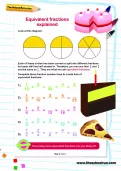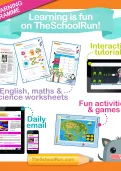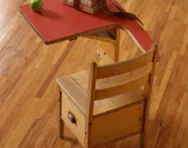Important update from TheSchoolRun
For the past 13 years, TheSchoolRun has been run by a small team of mums working from home, dedicated to providing quality educational resources to primary school parents. Unfortunately, rising supplier costs and falling revenue have made it impossible for us to continue operating, and we’ve had to make the difficult decision to close. The good news: We’ve arranged for another educational provider to take over many of our resources. These will be hosted on a new portal, where the content will be updated and expanded to support your child’s learning.
What this means for subscribers:
- Your subscription is still active, and for now, you can keep using the website as normal — just log in with your usual details to access all our articles and resources*.
- In a few months, all resources will move to the new portal. You’ll continue to have access there until your subscription ends. We’ll send you full details nearer the time.
- As a thank you for your support, we’ll also be sending you 16 primary school eBooks (worth £108.84) to download and keep.
A few changes to be aware of:
- The Learning Journey weekly email has ended, but your child’s plan will still be updated on your dashboard each Monday. Just log in to see the recommended worksheets.
- The 11+ weekly emails have now ended. We sent you all the remaining emails in the series at the end of March — please check your inbox (and spam folder) if you haven’t seen them. You can also follow the full programme here: 11+ Learning Journey.
If you have any questions, please contact us at [email protected]. Thank you for being part of our journey it’s been a privilege to support your family’s learning.
*If you need to reset your password, it will still work as usual. Please check your spam folder if the reset email doesn’t appear in your inbox.
What is a pupil referral unit?

We all like to think that our children will have an easy ride through school, but some young people struggle with mainstream education.
Attending a pupil referral unit (PRU) could help them continue to get an education while their problems are addressed. Around 16,000 pupils are currently educated in PRUs, and while the majority are secondary school age, these units can also provide a solution for primary school children who are having difficulties at school.
What is a pupil referral unit?
PRUs are a type of school that caters for children who aren’t able to attend a mainstream school. Pupils are often referred there if they need greater care and support than their school can provide.
Children who attend a PRU might be:
- permanently excluded from their mainstream school for behaviour reasons, or at risk of permanent exclusion.
- experiencing emotional or behavioural difficulties, including problems with anger, mental health issues, and school phobia/refusal.
- experiencing severe bullying.
- diagnosed with special educational needs (SEN), or in the process of getting a diagnosis.
- suffering from a short- or long-term illness that makes mainstream school unsuitable.
- a new starter who missed out on a school place.
- pregnant or young mothers.
Some pupils will have all their lessons at a PRU, while others split their time between the mainstream school where they’re registered and a PRU.
PRUs are not special schools, and pupils who have more severe special educational needs or disabilities should not be sent to a PRU as a long-term solution.


Start your child on a daily learning programme
- Resources sent each day direct to your inbox
- English, maths and science activities for your child's school year
- Keep your child's learning on track
Why send a child to a PRU?
The local authority has a duty to provide a suitable full-time education to all children of school age. PRUs are funded by the local authority, and fulfil this obligation for children who, for whatever reason, can’t be accommodated in a mainstream school.
Pupils are typically referred to a PRU by their school, and you should be closely involved in the process as a parent.
Becky’s son Oliver, now 15, was sent to a PRU when he was in Reception. ‘It was clear that he had autistic spectrum disorder (ASD), but the psychologist and paediatrician had conflicting views,’ she explains.
‘His school wanted him to get a statement of special educational needs (now an Education, Health and Care Plan, or EHCP), and going to the PRU was the most effective way to do it.’
If a child is excluded from school, the local authority has an obligation to provide alternative education from the sixth school day of their exclusion. Many of these children will be sent to a PRU.
What will your child learn at a PRU?
PRUs don’t have to teach the full National Curriculum, but they should aim to provide a broad and balanced education that covers as much of the Curriculum as possible.
They should make it a priority to teach English, maths, science, computing, and personal, social and health education (PSHE).
What are the benefits of a PRU?
Although attending a PRU is often seen as a last resort, it can have great benefits for pupils who are having difficulties at school.
They tend to be staffed by highly qualified and experienced teachers, who have expertise in dealing with SEN, emotional and behavioural difficulties. Pupils often have access to support from social workers, educational psychologists and counsellors, who can help them with their problems.
Class sizes are typically small, allowing pupils more one-to-one attention.
Rather than receiving a one-size-fits-all education, pupils will have an education plan and timetable designed specifically to meet their needs. Extra support with literacy and numeracy is available, and older students might divide their time between Curriculum subjects and vocational studies or work experience.
This means that pupils tend to be more motivated and confident, which in turn improves attendance and attainment.
Teaching quality and effectiveness also tends to be very high: 14 per cent of PRUs are rated Outstanding by Ofsted, compared to just three per cent of primary schools.
Philippa is mum to twins Sam and Daniel, 11, who both attend a PRU. ‘Sam wasn’t coping with mainstream education due to autistic traits and ADHD, while Daniel had anger management issues,’ she explains.
‘The PRU has been the making of them, as it doesn’t just focus on academic study but has a more holistic approach, working on anger management, socialisation, behaviour and coping strategies.’
What are the drawbacks?
Despite the many benefits of PRUs, there is a stigma to attending them, which children can find it hard to escape.
The limited curriculum means that children can miss out on a broad education, and although staff are highly trained, disruptive behaviour is often the norm. This can be distressing to children who are attending a PRU because of emotional difficulties or problems with their home life.
The range of ages and circumstances of pupils, and the limited number of staff, can also make it hard to cater for each child’s individual needs. Indeed, in 2016 a senior Department for Education director admitted that the government needed to ‘do better’ for pupils in PRUs.
The future after attending a PRU
Some children will stay in a PRU until they finish their full-time education, including Philippa’s twins. ‘It suits them so well that the plan is to let them sit their GCSEs there; there’s no plan to move them back into mainstream,’ she says.
Generally, though, a PRU placement is seen as a short-term measure and the aim is to reintegrate the child into mainstream education as soon as possible. ‘Oliver integrated back into mainstream in Year 2, and has been there ever since,’ Becky adds. ‘His short time in the PRU helped him enormously, and he’s now about to take his GCSEs.’








